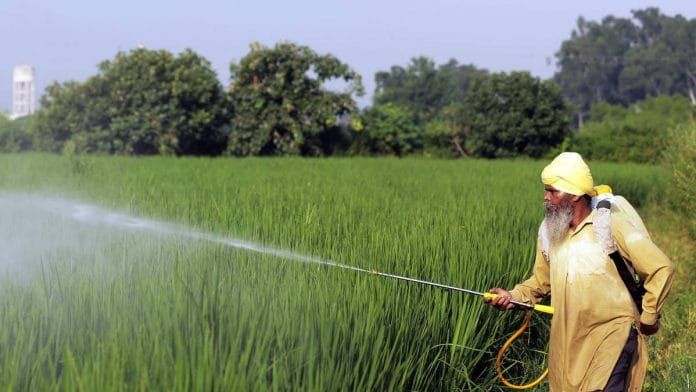While there could be differences on how to address the issues pertaining to agriculture as a sector and livelihood, the problems are well identified. One need not reiterate the issues of fragmentation of land holdings, unremunerative prices, ecological issues — particularly water table depletion, erosion in the quality of soil, monocropping and resource intensive industrial farming carried out in some geographies. These are accepted problems irrespective of an ideological divide without much debate. However, when it comes to addressing these problems, the jury seems to be divided on two sharply distinct ideological lines.
The advocates of reform define the solution as a market takeover — minimising the role of the State in agriculture, arguing that science (genetically modified crops) may be a solution to the intensive use of fertiliser and pesticides; or hydroponics could be an alternative. They believe that science will solve the problems created by science. The market determined prices will correct overproduction and hopefully even address the issue of water mining if only the prices of paddy, rice and sugarcane find their levels creating disincentives for putting in more land under these crops. This school of thought is also represented by scholars who argue that the now repealed farm laws would have been the wand that produced magic.
On the other side is an argument for a greater intervention of the State, through procurement, legally binding support prices; a move towards zero budget natural farming (ZBNF) and organic farming. They argue that the support prices should be used as a signalling mechanism to modify the cropping pattern. It is also argued that a decentralised procurement programme will address the issues of Punjab based distortion. Both sides agree that using co-operative like structures represented by Amul or the Farmer Producer Organisations (FPO) are interesting interventions for reform in marketing ecosystem. The ultimate question to be asked is whether agriculture is a sustainable livelihood at all. Since this activity is associated with tradition and sentiment of land ownership, the cultural factors also trump the economics.
Also read: One way Indian govt can remedy food crisis and boost production — vertical farms
In addressing these issues do we have lessons to be learnt (beyond the obvious) from Amul and its replication under the operation flood programme? Can the principles of market and farmer welfare be bundled? While a large part of the dairy sector is structured in the co-operative framework, the form of organisation need not to be like a religious edict. We need to unpeel the principles on which dairying was built.
Dr. Verghese Kurien, the doyen of the dairy movement said that there was no Anand (from where Amul started in Gujarat) without Mumbai (their first consumption hub). The markets are important. Developed markets give a lucrative price, particularly if there is value addition and processing. In case of dairying, aggregation of milk was always accompanied with the construction of a processing plant. The organisation of farmers at the village level was the job of the State, the processing plants at the district and state levels ran on commerce. The markets and market systems are not inherently lucrative. To access market systems, farmers have to negotiate an extractive value chain to get a better deal at each link of the chain. Being a co-operative helps these negotiations.
The value for the farmer is not restricted to accessing a better price, but also in working the existing resources towards greater productivity. How can leakages in the production cycle be minimised? In dairying it was maintaining the health of the animal and addressing nutritional requirements for higher production. This was achieved through provision of veterinary care and good quality fortified cattle feed. The former falls into the realm of the State — a welfare activity that was subsidised, while the latter was a commercial activity, if the end product (milk) was in a stable and remunerative value chain. The principles in traditional agriculture, would ensure crop protection, better farm practices (that fall into the realm of the State) and better nutrition, water and fertilisers or sustainable alternatives (falling in the realm of markets).
Also read: India’s wheat planting gathers momentum, latest data shows acreage up by nearly 10%
Then there is a larger issue of productivity enhancement of the same resource but with significant investments. This involved investments in science: breed improvement through artificial insemination and embryo transfer technology, or in the case of traditional agriculture a move towards industrialisation (large farms, deep tilling, heavy use of fertilisers and liberal access to water). Alternately science could also move towards sustainable options—like ZBNF; Systematic Rice Intensification or Systematic Wheat Intensification.
We have to realise that what we have summarised in two paragraphs what took about five decades of intensive work with investments of taxpayer money and donor resources that were invested in the ecosystem. These investments did not interfere with the commercial cycle of the exchange between the farmer and the markets but was spent to build the ecosystem. When scholars arguing for “reform” indicate that the markets take care of these issues efficiently and cite Amul, they just see the external aspects of processing, marketing, branding, storage, and logistics without looking at the nuance of the ecosystem investments. Cooperatives provide a people friendly ideological sheen. Have we made enough investments in the ecosystem for agriculture to become market friendly? Will the sloganeering help in making farming inherently viable to provide livelihood support to households? The answer is evident. But we feel good by saying “all is well”.
MS Sriram is Chairperson, Centre for Public Policy, Indian Institute of Management, Bangalore. This article first in Rajasthan Patrika and has been republished with author’s permission. Views are personal.






